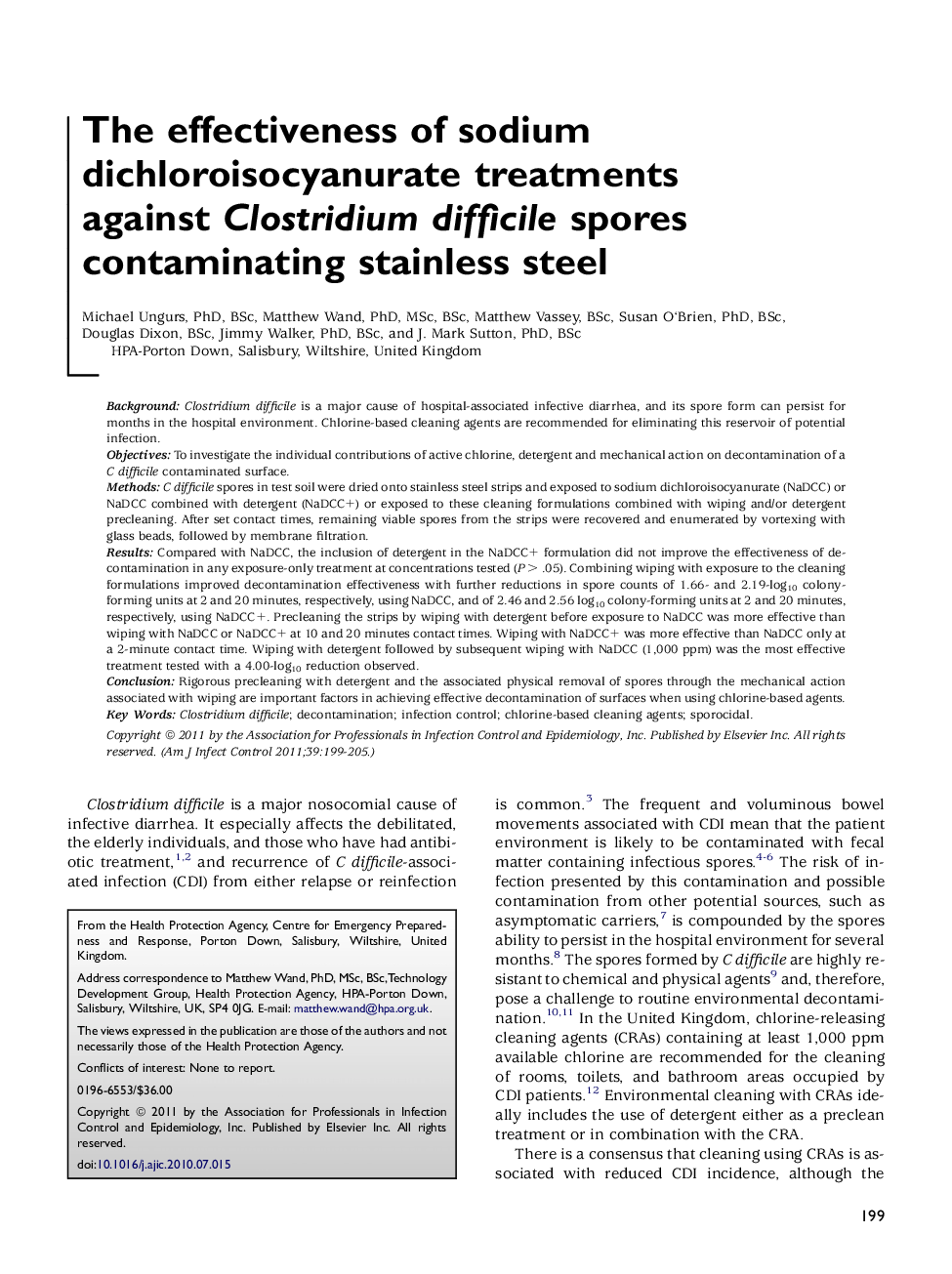| کد مقاله | کد نشریه | سال انتشار | مقاله انگلیسی | نسخه تمام متن |
|---|---|---|---|---|
| 2638891 | 1563526 | 2011 | 7 صفحه PDF | دانلود رایگان |

BackgroundClostridium difficile is a major cause of hospital-associated infective diarrhea, and its spore form can persist for months in the hospital environment. Chlorine-based cleaning agents are recommended for eliminating this reservoir of potential infection.ObjectivesTo investigate the individual contributions of active chlorine, detergent and mechanical action on decontamination of a C difficile contaminated surface.MethodsC difficile spores in test soil were dried onto stainless steel strips and exposed to sodium dichloroisocyanurate (NaDCC) or NaDCC combined with detergent (NaDCC+) or exposed to these cleaning formulations combined with wiping and/or detergent precleaning. After set contact times, remaining viable spores from the strips were recovered and enumerated by vortexing with glass beads, followed by membrane filtration.ResultsCompared with NaDCC, the inclusion of detergent in the NaDCC+ formulation did not improve the effectiveness of decontamination in any exposure-only treatment at concentrations tested (P > .05). Combining wiping with exposure to the cleaning formulations improved decontamination effectiveness with further reductions in spore counts of 1.66- and 2.19-log10 colony-forming units at 2 and 20 minutes, respectively, using NaDCC, and of 2.46 and 2.56 log10 colony-forming units at 2 and 20 minutes, respectively, using NaDCC+. Precleaning the strips by wiping with detergent before exposure to NaDCC was more effective than wiping with NaDCC or NaDCC+ at 10 and 20 minutes contact times. Wiping with NaDCC+ was more effective than NaDCC only at a 2-minute contact time. Wiping with detergent followed by subsequent wiping with NaDCC (1,000 ppm) was the most effective treatment tested with a 4.00-log10 reduction observed.ConclusionRigorous precleaning with detergent and the associated physical removal of spores through the mechanical action associated with wiping are important factors in achieving effective decontamination of surfaces when using chlorine-based agents.
Journal: American Journal of Infection Control - Volume 39, Issue 3, April 2011, Pages 199–205